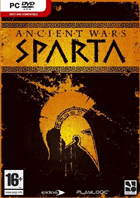Voor uitleven
GvEA, 20 oktober 2009, zaak T-307/08, Aldi Einkauf GmbH & Co. tegen OHIM / Goya Importaciones y Distribuciones, SL.
Gemeenschapsmerk. Oppositieprocedure tegen Gemeenschapsbeeldmerk 4 OUT Living o.g.v. ouder Spaans nationaal beeldmerk Living & Co (kleding). Oppositie toegewezen. Verwarringsgevaar.
35. With regard to the second argument, to the effect that the similarity of the word element ‘Living’ common to both marks is insufficient to established a likelihood of confusion, given that that element has only a weak distinctive character in the earlier mark, the Board of Appeal explained in paragraphs 30 and 31 of the contested decision that, although the distinctiveness of the ‘Living’ element cannot be considered high, it must still be considered as a distinctive feature in view of the great importance of the visual element in the opposing marks in relation to goods in classes 18 and 25, which are in principle purchased after a visual inspection. That position is confirmed by the case-law, according to which the finding of a weak distinctive character for the earlier trade mark does not prevent a finding that there is a likelihood of confusion. Although the distinctive character of the earlier mark must be taken into account when assessing the likelihood of confusion (see, by analogy, Case C-39/97 Canon [1998] ECR I-5507, paragraph 24), it is only one factor among others in that assessment. Thus, even in a case involving an earlier mark of weak distinctive character, there may be a likelihood of confusion on account, in particular, of a similarity between the signs and between the goods or services covered (Case T-134/06 Xentral v OHIM – Pages jaunes (PAGESJAUNES.COM) [2007] ECR II-5213, paragraph 70; see also, to that effect, Case T-112/03 L’Oréal v OHIM – Revlon (FLEXI AIR) [2005] ECR II-949, paragraph 61).
(…)
38. With regard to the applicant’s fourth argument, according to which the way in which the opposing marks are formed is different, as the ‘Living’ element constitutes the beginning of the earlier mark, whereas it is at the end of the mark applied for, that circumstance is not such as to bring into question the similarity between the marks concerned or the likelihood of confusion existing between them. The different positions of the ‘Living’ element do not in any way affect the dominant character that that element has for the marks concerned. The Board of Appeal was thus right to conclude that, even if the degree of similarity created by the common element ‘Living’ is weakened by other elements, the similarity is not neutralised in the present case.
(…)
40 In the light of all of the foregoing, it must be held that the Board of Appeal did not err in law in finding that there was a likelihood of confusion between the mark applied for and the earlier mark. The applicant’s single plea must, therefore, be rejected and the action accordingly dismissed.
Lees het arrest hier.
.gif) Gedeeltelijke publicatie op IViR-website: Harmonizing European Copyright Law: The Challenges of Better Lawmaking, M.M.M. van Eechoud, P.B. Hugenholtz, S. van Gompel, L. Guibault en N. Helberger. Information Law Series 19, Alphen aan den Rijn: Kluwer Law International 2009.
Gedeeltelijke publicatie op IViR-website: Harmonizing European Copyright Law: The Challenges of Better Lawmaking, M.M.M. van Eechoud, P.B. Hugenholtz, S. van Gompel, L. Guibault en N. Helberger. Information Law Series 19, Alphen aan den Rijn: Kluwer Law International 2009. Jesse Hofhuis: Het Streisand effect. “In 2003 was een afbeelding van de woning van Barbra Streisand afgebeeld op stockfotosite www.pictopia.com. Omdat Barbra Streisand de afbeelding als inbreuk op haar privacy zag, begon zij een rechtszaak. Over de uitkomst van de rechtszaak is weinig te vinden – die werd overvleugeld door de gebeurtenissen buiten de rechtszaal. Binnen één maand hadden bijna een half miljoen mensen de foto bekeken en was de term “Streisand Effect” geboren: door een publicatie met juridische dreigementen tegen te gaan kan het nieuws tot enorme proporties worden opgeblazen. De afgelopen weken heeft Ralph Lauren het Streisand effect ondervonden.
Jesse Hofhuis: Het Streisand effect. “In 2003 was een afbeelding van de woning van Barbra Streisand afgebeeld op stockfotosite www.pictopia.com. Omdat Barbra Streisand de afbeelding als inbreuk op haar privacy zag, begon zij een rechtszaak. Over de uitkomst van de rechtszaak is weinig te vinden – die werd overvleugeld door de gebeurtenissen buiten de rechtszaal. Binnen één maand hadden bijna een half miljoen mensen de foto bekeken en was de term “Streisand Effect” geboren: door een publicatie met juridische dreigementen tegen te gaan kan het nieuws tot enorme proporties worden opgeblazen. De afgelopen weken heeft Ralph Lauren het Streisand effect ondervonden. Hoge Raad, 16 oktober 2009, C05/160HR, conclusie A-G Huydecoper inzake Adidas AG c.s. tegen Marca Mode c.s. (met dank aan Bastiaan van Ramshorst,
Hoge Raad, 16 oktober 2009, C05/160HR, conclusie A-G Huydecoper inzake Adidas AG c.s. tegen Marca Mode c.s. (met dank aan Bastiaan van Ramshorst, 
 Rechtbank ’s-Hertogenbosch, 14 oktober 2009, KG ZA 09-598, Techcomlight B.V. tegen Bik Bouwproducten B.V. & Vaculux B.V. (met dank aan Ernst-Jan Louwers,
Rechtbank ’s-Hertogenbosch, 14 oktober 2009, KG ZA 09-598, Techcomlight B.V. tegen Bik Bouwproducten B.V. & Vaculux B.V. (met dank aan Ernst-Jan Louwers,  Rechtbank Amsterdam, 14 oktober 2009, HA ZA 08-2094, Visionvale Ltd & Burut co. Tegen Playlogic International N.V. (met dank aan J.J. van der Goen,
Rechtbank Amsterdam, 14 oktober 2009, HA ZA 08-2094, Visionvale Ltd & Burut co. Tegen Playlogic International N.V. (met dank aan J.J. van der Goen, 





















































































